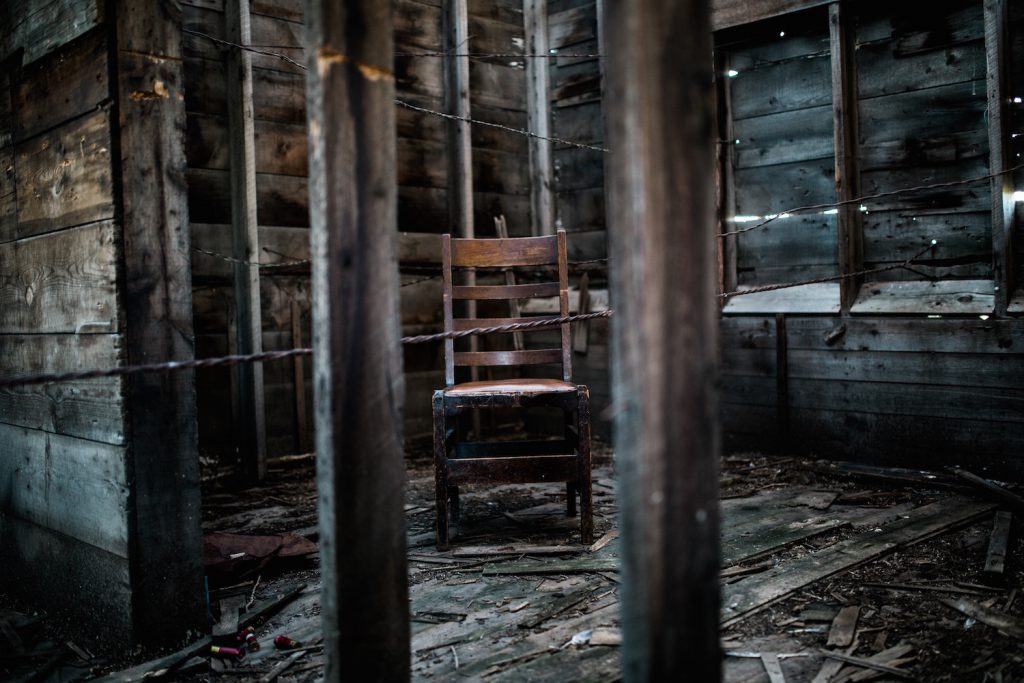The Imprisonment of Life through Art: A Look at Percival Bartlebooth and Isolation from the Aesthetic in ‘Life a User’s Manual’
by Lianna Arcelay
This essay explores Georges Perec’s belief in Life: A User’s Manual that literature, and art more generally, is an ongoing production of unstoppable energy. The writer contends that Perec’s character Percival Bartlebooth exemplifies the limitations of the artist with regard to capturing the world in an art piece. In addition, the writer considers the ironic nature of Perec’s title. The essay brings in William Gass’s Reading Rilke: Reflections on the Problems of Translation as a counterpoint to Perec’s beliefs on the limitations of the artist. Finally, the writer calls for continual, sensuous engagement with the world for the production of discourse in any form, where such discourse captures each individual’s personal aesthetic encounter with the everyday.
In his review “The Secret to ‘Seeing Slowly,’” Andrew Butterfield assesses Michael Findlay’s text Seeing Slowly: Looking at Modern Art, underscoring Findlay’s view of art as a matter that is “fundamentally sensual, experiential and emotional” and not a mere commodity. The concept of the art piece – whether in the form of prose, poetry, or painting – as a personal aesthetic experience is relevant to Georges Perec’s vision regarding the relationship between life and literature: simply put, the latter cannot completely capture the essence of the former due to the existence of a multitude of aesthetic encounters with the world. In this essay, I examine Perec’s Life a User’s Manual, particularly the tale of Percival Bartlebooth, in relation to Perec’s stance on literature and its limitations. I argue that Bartlebooth’s character is symbolic of the vision of the artist that Perec critiques. In addition, the character’s fate, manifested in both metaphysical and physical deterioration, represents what Perec fears not only for the artist, but for all: disengagement with the world due to our natural, sometimes excessive practice of constraints in an attempt to control it.
The title of the book presents an initial opportunity to consider Perec’s perspective on literature.1 The concept of life is personal, while a user’s manual is for all to comprehend. Hence, the dialectic between the individualization of life and the nature of a user’s manual gives the title a sense of irony. Accordingly, Perec’s title alludes to our inclination to draw generalizations concerning life, thus attempting to create a user’s manual. Yet, life remains individualized. Every person both subconsciously and consciously perceives the matters and sensations of life differently from another. Perec’s vision is that literature, or art in a broader sense, cannot perfectly encompass the complexity of life, particularly when such complexity refers to its undefined nature, tailored to each individual. Thus, there can be no single user’s manual for life. At the same time, Perec’s vision entails an acknowledgement of the inevitability of producing more literature, or discourse, to further explain the world, or life (“Life is a book”). Existing literature, then, is inherently incomplete.
Perec’s warning about the limitations of literature becomes apparent in the narrative itself, in the decline of the character Percival Bartlebooth. When he is twenty, Bartlebooth resolves to begin a project in which he “starts from nothing, passes through precise operations […] and ends up with nothing.” Bartlebooth’s plan possesses three phases: 1) He would first learn how to paint watercolors for ten years. 2) In the next twenty years, he would travel the world painting seascapes of “identical format.” Subsequent to completing each seascape, he would send the painting to the craftsman Gaspard Winkler, who would create a jigsaw puzzle from it. 3) The final phase of Bartlebooth’s project would involve his assembly of each puzzle. As he would complete a puzzle, the seascape it depicted would be “retexturised so that it could be removed from its backing, returned to the place it had been painted […] and dipped in a detergent solution whence would emerge a clean and unmarked sheet of Whatman paper.” As such, Bartlebooth figuratively “starts from nothing” as the project has no marked purpose outside its own completion. He literally “ends up with nothing” due to the planned destruction of his work (Life a User’s Manual2 134-135). By the final chapter, Bartlebooth, too, has been reduced, his body deteriorating. The narrator notes that his hand, which holds the last piece of a puzzle, lies on the table in a “not very natural way” (LUM 563). That his hand appears unnatural is a metaphorical commentary on the unrealistic, futile nature of his project and points to Perec’s vision of the relationship between life and art: the latter cannot completely encapsulate the former due to the artist’s limitations as a human. Despite the natural desire to make sense of the world, the artist cannot genuinely recapture what he or she witnessed through simple “eye looking”3 (“The Doing of Fiction” 99).
Perhaps this decline might be seen as a result of the rigorous constraints Bartlebooth places around his project, their place of origin a “certain idea of perfection” (LUM 134). It is interesting that the project attempts to constrain the world twofold, once through Bartlebooth’s obstinateness at painting what he encountered in his travels and another through the locking-in of a painting in a puzzle. That Bartlebooth solely portrays one subject matter in all five hundred of his paintings – “seascapes of identical format…depicting seaports” (LUM 134) – makes room for another metaphorical commentary in relation to Perec’s claim regarding discourse, as well as to the title of the work. Bartlebooth’s decision to exclusively present one motif – the seascapes – relates to our desire to draw generalizations regarding the world. Bartlebooth’s constraint on the subject matter of his work relates to the conventions of discourse, which create a structured environment to tell the happenings of life, whether oral or written.
Furthermore, the portrayal of only seascapes in Bartlebooth’s work embodies that which Perec critiques in respect to literary artists who strive to constrain life through their work. These artists, from his stance, fail to comprehend that such encapsulation is not possible due to the inevitably differing perceptions of the “world.” The attempt to replace life through their work therefore becomes futile, similar to the futility observed in Bartlebooth’s endeavor. That each seascape be “returned to the place where it had been painted” (LUM 135) insinuates Bartlebooth’s “incorrect” – in terms of Perec’s vision – perception of his work. Bartlebooth seems to perceive his painting’s ability to encapsulate what he sees, and, therefore, it “rightfully” belongs in its place of origin. Perec, on the other hand, might determine this a case of faulty psychology on the part of the artist.
Bartlebooth additionally “wanted the project to come full circle without leaving a mark, like an oily sea closing over a drowning man” (LUM 442). Here, the “drowning man” refers to Bartlebooth himself, as he drowns in the “implacable adventure” (LUM 442) of his project. He drowns in the sense that he isolates himself from the world, the opposite of which Perec deemed necessary for the artist: engagement through “eye looking” with the world (“The Doing” 99). The narrator’s comment on the aim of the project further underscores its futility: “[Bartlebooth’s] aim was for…nothing at all to subsist, for nothing but the void to emerge from it” (LUM 442). While the use of the term “void” here alludes to the nature of the project as a whole, it may also signify the space in which Bartlebooth places himself on the uptake of the project, dislocated from the world.
Irony arises in Bartlebooth’s unawareness of the harm the void may bring, as well as the harm that manifests from becoming increasingly removed from the world. It is evident that Bartlebooth is oblivious to this ramification. Despite going blind, he persists in working on the puzzles: “He realised with exhilaration [from the sense of touch] that he could carry on working” (LUM 443). This“exhilaration” highlights the impact of an individual’s dislocation from the world to the degree that Bartlebooth possesses. What ensues is an unawareness of such displacement, which in turn yields further isolation.
Such isolation is evident from the beginning of Bartlebooth’s narrative. The reader is informed that in the “last two years he has scarcely ever left the flat,” and that “sometimes forty-eight hours go by without his giving any sign of life” (LUM 130). The text also details that almost always he is “seated at his puzzle […] almost fleshless, with […] a waxy complexion [and] blank eyes” (LUM 562). Despite Bartlebooth being alive, the description of his physical appearance suggests near death, the consequence of his withdrawal from the world; hence, the deadly nature that his project carries, which originates from the absurdity of his intent to permanently seal off the “blank spaces” that arise from one’s engagement with the world (“The Doing” 94). The perfectionistic nature of his project resists Perec’s vision of art as inherently limited in terms of capturing life. Rather, art continually opens blank spaces, or discourse, on life.
Bartlebooth’s endeavor is perfectionistic in two manners: (1) as an “arbitrarily constrained programme” and (2) its drive for completion (LUM 133). Bartlebooth’s dogged desire to complete the project is synonymous to the literary artists Perec critiques in his vision. From Perec’s position, no artistic project will ever be complete due to its inability to properly encapsulate the world through description or explanation. How one artist describes or explains a happening may not be how another does. As such, “there will always be […] the need to say something about the world” (“Life is a book”). An obsession with completion may ultimately induce one’s deterioration, an extreme exemplified in Bartlebooth’s story. At the same time, perfectionism isolates the individual from the world. As a hermit, Bartlebooth cannot “pay [greater] attention” to the “everyday” through the senses (“The Doing” 99).
Bartlebooth’s blindness, then, might be considered punishment for forsaking Perec’s call for more“eye looking” with the world (“The Doing” 99). Bartlebooth is “blind” to the uselessness of his endeavor, where “gratuitousness was the sole guarantor of its rigor” (LUM 134). The text notes that he himself “resolves […] that his whole life would be organised around a single project” (LUM 133). As such, the question of whether Bartlebooth is even aware of the vanity of his endeavor arises. Yet, Perec provides an answer in that Bartlebooth is described as a “man of exceptional arrogance” (133). Such “arrogance” originates from the desire that manifests in his project: to “fix, to describe, to exhaust…the inextricable incoherence of things,” (LUM 133). Yet such accounting for the happenings of life in a thorough manner is impossible, according to Perec; hence, the author’s idea of never-ending discourse.
Beyond Bartlebooth and his unfortunate story, the title of Perec’s work provides another lens through which to consider his position on the relationship between life and art. No work can stand as a “user’s manual” for “life.” Each individual possesses their own way of perceiving what they takes in through “eye looking,” or the senses, and as such, they will each have a different account, or “discourse,” on that experience. Thus, the novel’s title opposes Perec’s stance on the limitations of a work of art – that it cannot properly encapsulate the happenings of the world. At the same time, the title explains the multiplication of stories within the text. One can consider Perec’s stance on the need for simple “eye looking” in relation to William Gass’s assertion, in Reading Rilke, on Rilke’s prowess in “[allowing] the world in” (142): “training his eye not to flinch, to see the thing seen…to absorb sensation as if it were food” (36). Perec’s vision is relevant to Gass’s work in that the concept of a “life of taking in” acknowledges the fact that each person perceives an experience in a different manner, regardless of whether the other has undergone an identical or similar experience. Discourse, irrespective of its form, and based on the individualized perception of an experience, is incomplete due to the indefinability of life. As such, life cannot be generalized. What may apply to the many still may not apply to the few due to our nature to not simply “perceive an IT, [but] perceive what that IT means” (Gass 143).
Gass’s concept of a “life of taking in” is similar to Perec’s vision on the relationship between art and the world, yet where the similitude becomes problematic is that Gass places Rilke’s skill to encapsulate life through his poetry on a pedestal. He glorifies the poet’s capacity to translate his engagement—his aesthetic encounter—with the world into a poem. This is evidenced, for instance, in Gass’s commentary on Rilke’s desire to be “purely a poet,” or a “true poet”: an “agent of transfiguration whose sole function was the almost magical movement of matter into mind” (23-24). Gass surmises that Rilke “was […] very convincing in his chosen role [of the ‘true poet’],” therefore not conforming to Perec’s view on the inevitable incompleteness of art (24). Later in the text, Gass deems Rilke a “passion’s spokesman.” He is a “priest of the poet’s art, [as] he takes the European lyric to new levels of achievement […] and creates the texts of a worthy religion at last, one which we may wholeheartedly admire” (Gass 33). Here, Gass elevates the poet, specifically his ability to “purely” capture the world in a poem, in a religious sense. According to Gass, Rilke facilitates poetry becoming a “religion.” Thus, we again see that Gass—despite the parallel between his idea of “allowing the world in” through sensation, and Perec’s concept of “eye looking”—contradicts Perec’s belief in art’s inability to perfectly capture sensual engagement with the world. That is, the aesthetic encounter portrayed in a piece is not applicable to all. Rather, the presented encounter depicts only the perspective of the piece’s creator.
However, in the penultimate chapter of Reading Rilke, Gass contends, “If poetry issues from an anonymous center, it certainly gets individualized by the time it reaches the suburbs” (184). Here, he suggests that each individual possesses a distinct aesthetic encounter—engagement through sensation—with art. As such, one can say that Gass’s idea of the individualization of a work through aesthetic experience puts him back in line with Perec’s position on the necessity for the individual to sensually engage with the “everyday” (“The Doing” 99). Thus both writers emphasize the experience itself, whether the experience is with a work of art or one’s physical surroundings. We hence see that in relation to Perec’s vision, Gass becomes an ambiguous figure. He contradicts the vision in stressing Rilke’s prowess in replacing life with art, yet upholds it in his concept of the individualization of an art piece through personal, sensual engagement with the world. What becomes crucial is that, while we must practice a “life of taking in,” we must also comprehend that “life” cannot be genuinely captured, or reflected, by anyone’s “discourse,” no matter the artist’s status.
The fate of Perec’s Bartlebooth represents the ramifications of the individual’s abuse of constraints, as well as their neurotic intention to thoroughly adhere to them. Bartlebooth, therefore, embodies an extreme desire to control life through personal, albeit generalized, discourse. The danger arises when we—in our automatic leap to perceive, discuss, and ultimately mold the everyday—forget to experience it “with an affect that is sensuous […] that produces […] an altered state of mind, possibly a visceral feeling” (Findlay qtd. in Butterfield). At such a point, literature would become in a sad sense complete. In turn, aesthetic engagement with the world would cease, precluding blank spaces and room to create discourse on the engagement once practiced.
Works Cited
Butterfield, Andrew. “The Secret to ‘Seeing Slowly.’” The Wall Street Journal, 17 Nov. 2017, www.wsj.com/articles/review-the-secret-to-seeing-slowly-1510949616. Accessed on 6 Nov. 2017.
Gass, William H. Reading Rilke: Reflections on the Problems of Translation. New York: Alfred A. Knopf, 1999.
Perec, Georges. Life a User’s Manual. Translated by David Bellos. Boston: David R. Godine, Publisher, 2009.
Perec, Georges. “Life is a book.” Interview by Jean Royer. Reprinted in Perec, Entretiens et conférences, II (2003), 1979.
Perec, Georges. “The Doing of Fiction.” Interview by Kaye Mortley. The Review of Contemporary Fiction, Georges Perec Issue, August 1981.
Notes
1. “Binary nature of literature.” Near the conclusion of his interview “Life is a book” with Jean Royer, Perec suggests the nature of literature as comprised of two parts: that literature, or art as a whole, cannot fully encompass life’s happenings due to the various manners by which they may be experienced or perceived per individual; and that therefore, literary production must be ongoing.
2. From hence forth, the citation for Life a User’s Manual is abbreviated to LUM.
3. In his interview “The Doing of Fiction” with Kaye Mortley, Perec discusses his personal concept of “eye looking”: the absorption of one’s surroundings through the senses.
Citation style: MLA
Acknowledgement: Lianna would like to thank Dr. Thomas Cerbu for the depth to which this piece delves, as well as Sabnam Ghosh and Dr. Lindsey Harding for its refinement. She would also like to thank Dr. Sasha Spektor, who as a teacher and mentor, is exacting, yet generous with his time and invaluable insights.


